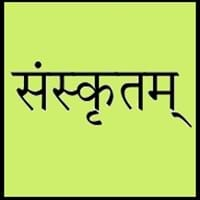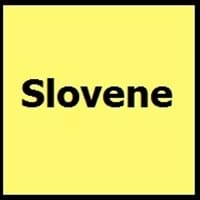Sanskrit and Slovene
Countries
India
European Union, Slovenia
National Language
India
Austria, Croatia, Hungary, Italy, Slovenia
Second Language
Not spoken in any of the countries
Not spoken in any of the countries
Speaking Continents
Asia
Europe
Minority Language
Not spoken in any of the countries
Austria, Hungary, Italy
Regulated By
Not Available
Slovenian Academy of Sciences and Arts
Interesting Facts
- Sanskrit language has highest number of vocabularies than any other language.
- Sanskrit Language has proved to help in speech therapy, also it increases concentration and helps to learn maths and science better.
- The Freising Monuments is the oldest preserved records of written Slovene from 10th century.
- The first Slovene book was printed in 1550.
Similar To
Old German Language
Serbo-Croatian
Derived From
Prakrit Language
Not Available
Alphabets in
Sanskrit-Alphabets.jpg#200
Slovene-Alphabets.jpg#200
Writing Direction
Left-To-Right, Horizontal
Left-To-Right, Horizontal
Hello
नमस्कारः (namaskāraḥ)
Halo
Thank You
धन्यवादाः (dhanyawādāh)
Hvala
How Are You?
कथमस्ति भवान् (kathamasti bhawān)
Kako se imate?
Good Night
शुभरात्री (shubharātrī)
Lahko noč
Good Evening
शुभः सायंकालः
Dober večer
Good Afternoon
शुभ दुपार
Dober dan
Good Morning
सुप्रभातम् (suprabhātam)
Dobro jutro
Please
कृपया (kripayā)
Prosim
Sorry
कृपया क्षम्यताम् (kripayā kshamyatām)
Oprostite
Bye
पुनः मिलामः(punah milamah)
Nasvidenje
I Love You
त्वामनुरजामि (twāmanurajāmi)
Ljubim te
Excuse Me
कृपया क्षम्यताम् (kripayā kshamyatām)
Oprostite
Dialect 1
Not present
Prekmurje Slovene
Where They Speak
Not Available
Hungary, Slovenia
How Many People Speak
Not Available
Dialect 2
Not present
Resian
Where They Speak
Not Available
Italy
Dialect 3
Not present
Styrian
Where They Speak
Not Available
Slovenia
Speaking Population
Not Available
Not Available
Native Name
संस्कृतम् (saṃskṛtam)
Not available
Alternative Names
Not Available
Slovenian, Slovenscina
French Name
sanskrit
slovène
German Name
Sanskrit
Slowenisch
Pronunciation
[səmskr̩t̪əm]
[slɔˈʋèːnski ˈjɛ̀ːzik], [slɔˈʋèːnʃt͡ʃina]
Ethnicity
Not Available
Slovenes
Origin
2000 B.C.
972-1093
Language Family
Indo-European Family
Indo-European Family
Subgroup
Indo-Iranian
Not Available
Branch
Indic
Not Available
Early Forms
Vedic Sanskrit
No early forms
Standard Forms
Sanskrit
Slovene
Signed Forms
Not Available
Not Available
Scope
Individual
Individual
ISO 639 6
Not Available
Not Available
Glottocode
sans1269
slov1268
Linguasphere
No data available
53-AAA-f
Language Type
Ancient
Living
Language Linguistic Typology
Subject-Object-Verb
Not Available
Language Morphological Typology
Synthetic
Fusional
All Sanskrit and Slovene Dialects
Most languages have dialects where each dialect differ from other dialect with respect to grammar and vocabulary. Here you will get to know all Sanskrit and Slovene dialects. Various dialects of Sanskrit and Slovene language differ in their pronunciations and words. Dialects of Sanskrit are spoken in different Sanskrit Speaking Countries whereas Slovene Dialects are spoken in different Slovene speaking countries. Also the number of people speaking Sanskrit vs Slovene Dialects varies from few thousands to many millions. Slovene dialects include: Prekmurje Slovene , Resian. Also learn about dialects in South American Languages and North American Languages.
Sanskrit and Slovene Speaking population
Sanskrit and Slovene speaking population is one of the factors based on which Sanskrit and Slovene languages can be compared. The total count of Sanskrit and Slovene Speaking population in percentage is also given. The percentage of people speaking Sanskrit language is Not Available whereas the percentage of people speaking Slovene language is Not Available. When we compare the speaking population of any two languages we get to know which of two languages is more popular. Find more details about how many people speak Sanskrit and Slovene on Sanskrit vs Slovene where you will get native speakers, speaking population in percentage and native names.
Sanskrit and Slovene Language Codes
Sanskrit and Slovene language codes are used in those applications where using language names are tedious. Sanskrit and Slovene Language Codes include all the international language codes, glottocodes and linguasphere.





